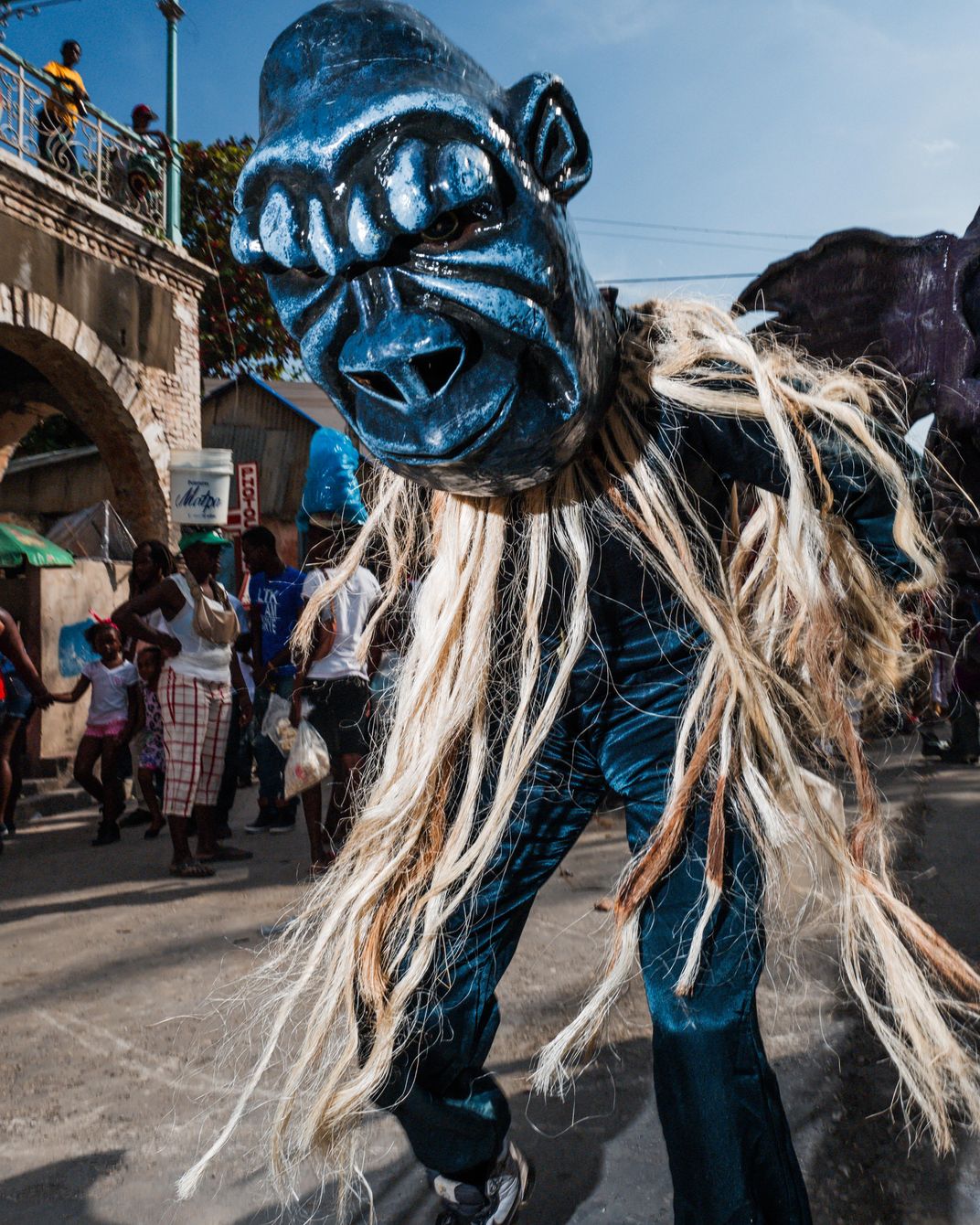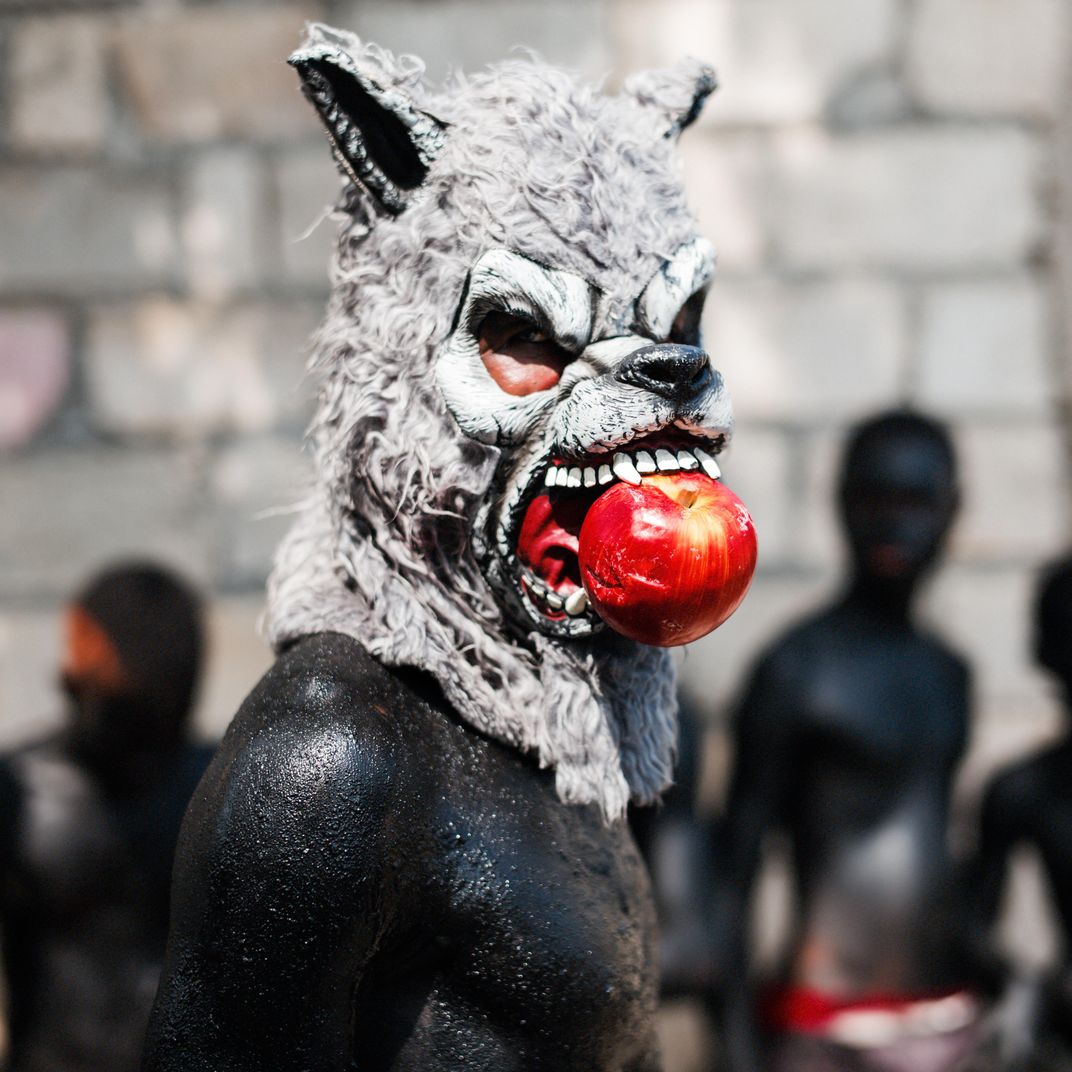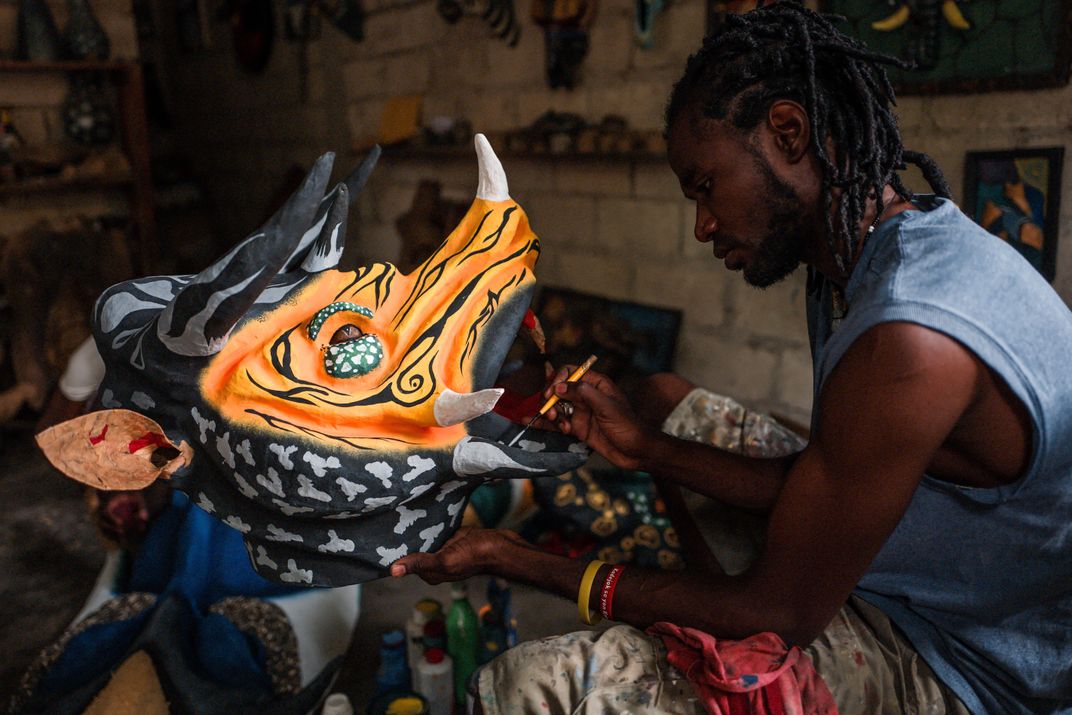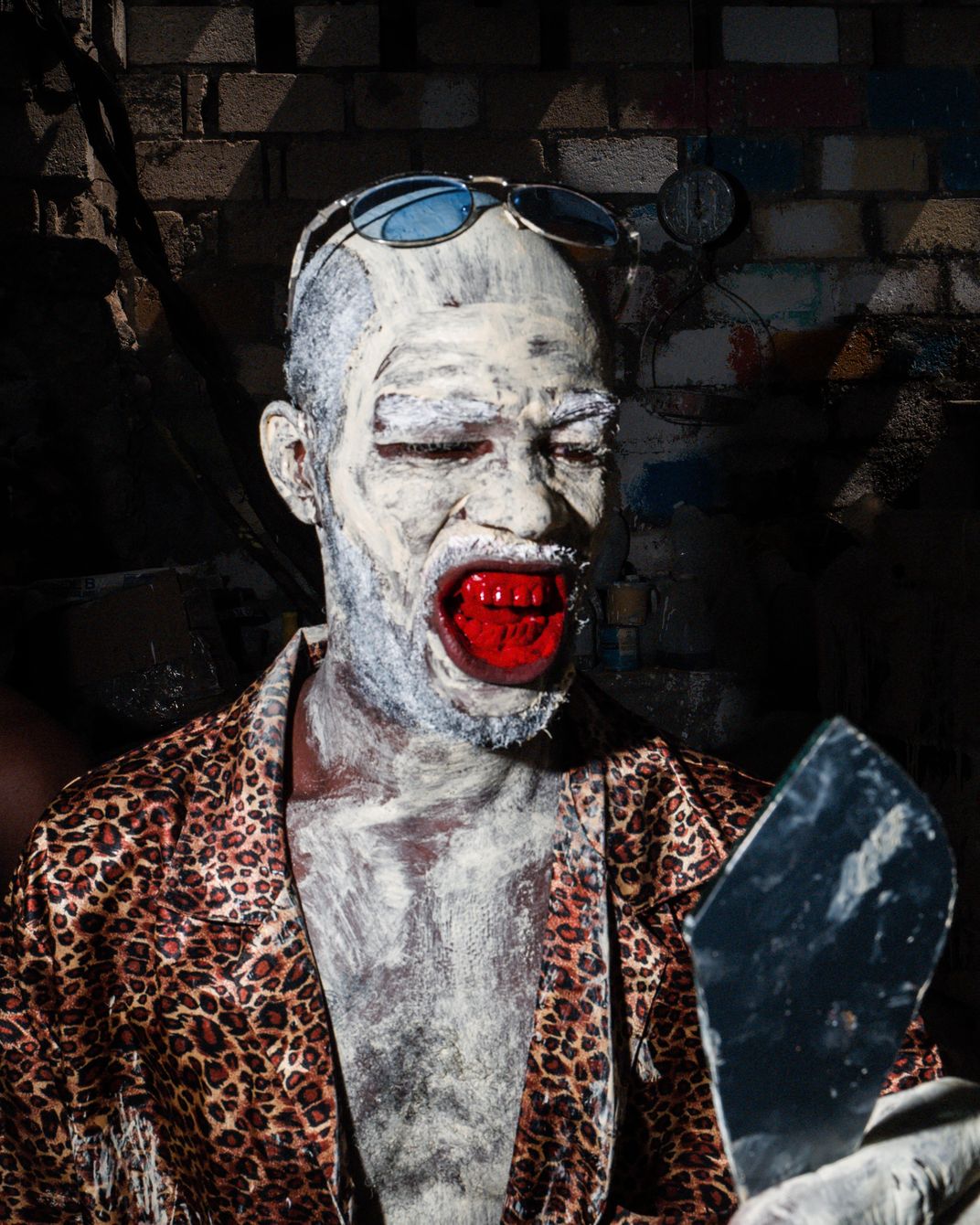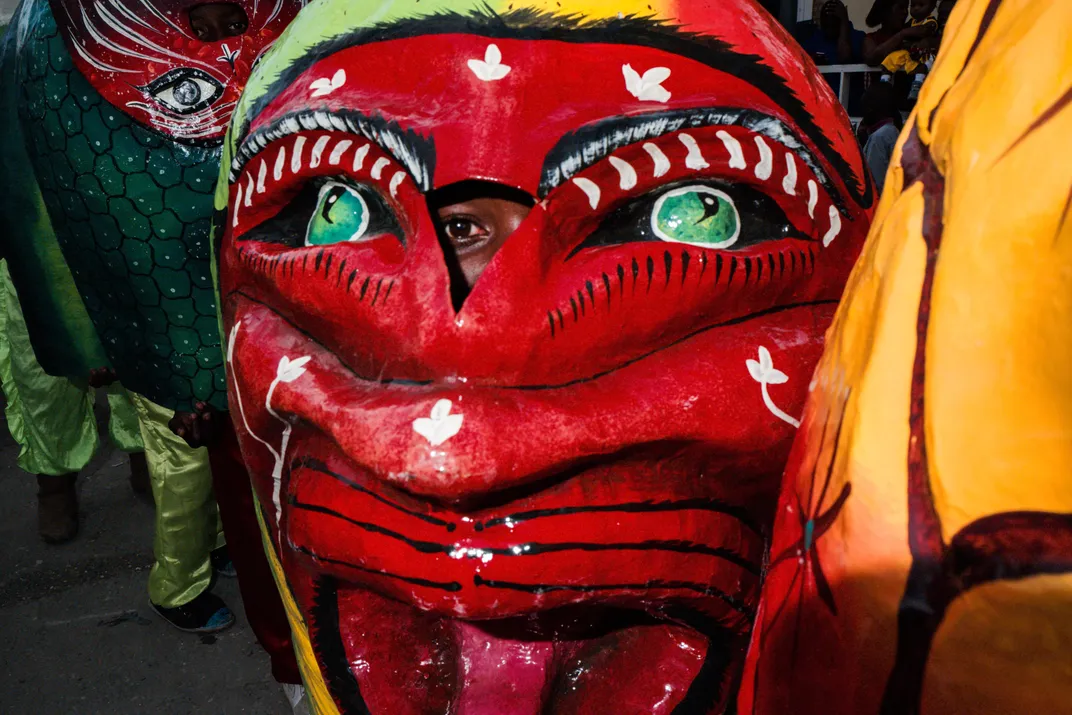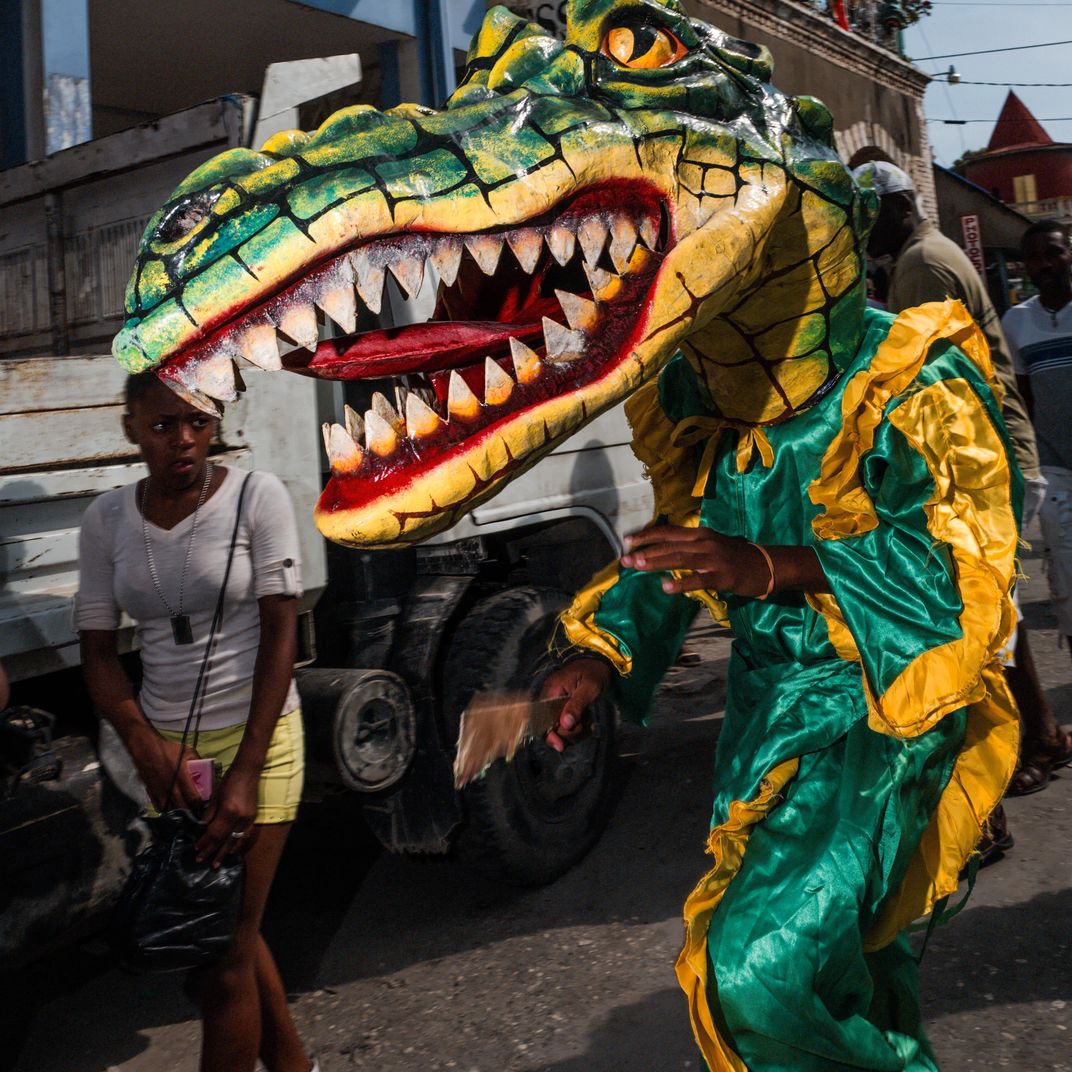A Photographer Captures Papier-Mâché and Politics on Parade in Haiti’s Jacmel
Michael Magers photographs high art and cutting cultural critiques during the annual Kanaval celebration
There had been a big rainstorm the night before Michael Magers’ first Kanaval. The annual February festivities are a long-held tradition in Jacmel, an artisan community in Haiti famous for elevating the craft of papier-mâché masks. The bad weather pushed back the start time of this year's costume parade until around noon.
By the time the parade got started, the temperature was already climbing to a hot and steamy 80 degrees. Magers, a documentary photographer, could feel sweat dripping off him. But that was nothing compared to what the people around him covered in intricate, non-breathable papier-mâché costumes were likely feeling.
Magers first came to Haiti in 2014 to document how basketball’s rise in the country was helping the Caribbean state rebuild in the wake of the 2010 earthquake. While there, he happened across another story: aid workers teaching children to surf. He returned in 2016 to photograph the first-ever surf competition in the country: “Small, but we're talking about a place where most people don't even swim let alone surf, so it's an amazing thing,” he said. It was during that trip, that Magers heard chatter about Kanaval in Jacmel, and decided to make the trip back for it this year.
Now positioned close to the start of the parade route, just before the streets became super narrow, he trained his lens on the pageantry taking place in front of him. “Suddenly you look up, and there’s a dude completely covered in blue paint with devil horns running straight at you,” Magers said. People in elaborate paint carried empty plastic jugs that they’d beat on spectators in their way. Others raced by on roller skates. “I wanted to see what it felt like to be in the middle of it, and to really interact with the crowd, the people that are dressed, and to just feel that sense of intensity,” he said.
Haiti's Kanaval celebrates the pre-Lenten festival of Mardi Gras. While the country's national Kanaval has traditionally been held three hours away from the beachside Jacmel in the capital city of Port-au-Prince (though this year politics got in the way over which city would officially host), Jacmel's artistic reputation has long made its homegrown festivities a uniquely Haitian affair.
The theater of the absurd might describe it best, says Magers. There are people dressed in full-body paint and wearing fantastical, elaborate masks depicting rhinos and lions and tigers and dragons. Lots of dragons. In the hours before the parade, Magers watched as neighborhood groups painted each other fully using house paint. One man even did his teeth.
Often, there are deep political themes intermingled among the revelry. As the main parade was just getting started, Magers watched as one man wearing a mask with the colors of the Haitian flag whipped another who was wearing an American mask and carrying a giant cross. They were putting on a show—a commentary about the missionaries who go to Haiti to, as Magers says, save people "quote-un-quote."
The day is full of people like Georges William Marshall—one of the master mask-makers that Magers got to know in Jacmel—who use Kanaval as a way to tell their own narratives about Haiti. Marshall has been working on his craft for more than 30 years, and his latest piece, "Le Rage du Guerre" or the Rage of War, a mask of a lion papered with foreign dollars, serves as its own socioeconomic critique on how the influx of foreign aid money has added to income inequality in Haiti.
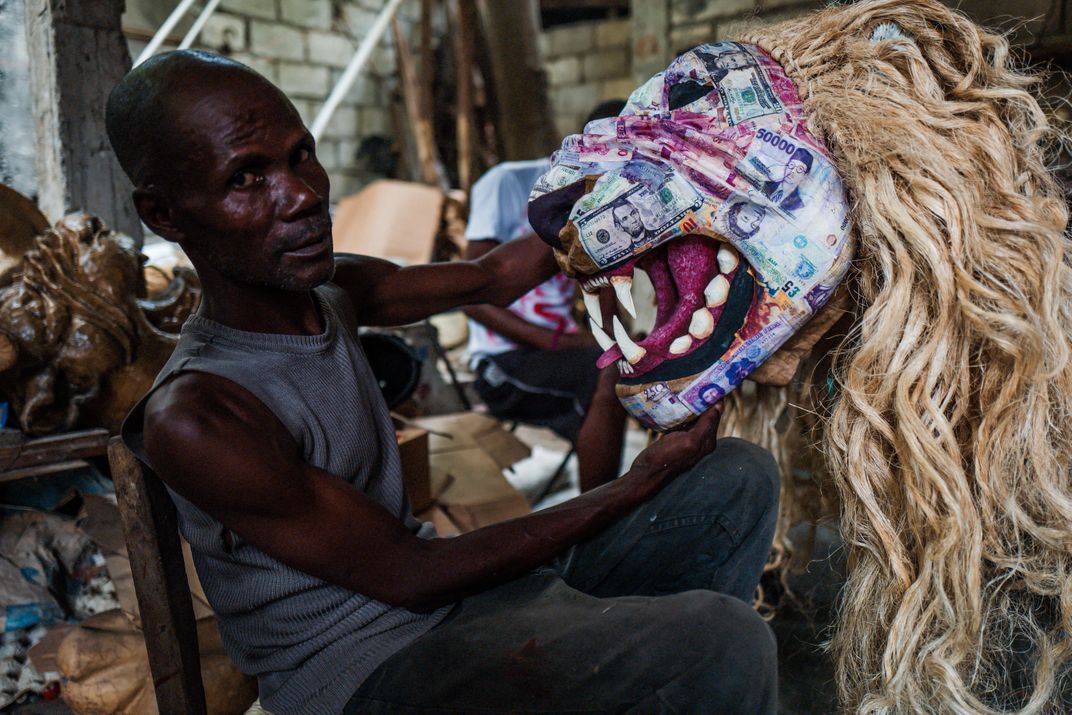
The poorest nation in the Western hemisphere, Haiti’s narrative has long been told as a tragedy by the outside world even before the devastating 7.0-magnitude earthquake hit seven years ago. But as Kanaval illustrates, Haiti’s past and present is more than a story of poverty, dysfunctional politics and the failure of international aid.
“Haitians, rightly so, are proud of their culture and proud of who they are and don't like being the poster child of what a disaster can do to this place," says Magers.
In 1804, the most-successful slave revolt in history founded the free Republic of Haiti from the French colony of Saint-Domingue. The world’s first black republic, it became the first nation in the western hemisphere to abolish slavery, and its proud, revolutionary origins still influence the country today.
In Jacmel, the festivities continue on long after the costume parade ends. Then the sounds of chanting and brass instruments fill the air as bands play songs composed specifically for the day. Many of these songs are written about Haiti's current political climate and also address its five centuries of history speaking to slavery, revolution, occupation, military dictatorships and internal politics. "Kanaval’s a chance to express some of that in a really creative way," says Magers.
Some of the most striking photographs in Magers’ series of Kanaval are those that capture the point of view of the children peering out at the pageantry around them. “Some of the kids are terrified," says Magers. "I would be too if I was three years old, and I saw these things clomping down the street."
Planning Your Next Trip?
Explore great travel deals
Smithsonian magazine participates in affiliate link advertising programs. If you purchase an item through these links, we receive a commission.
/https://tf-cmsv2-smithsonianmag-media.s3.amazonaws.com/filer/49/0c/490c0211-363f-4b6b-a7ff-529c01beb4c2/mpmagers_-_kanaval_2017_-__26_of_40.jpg)
